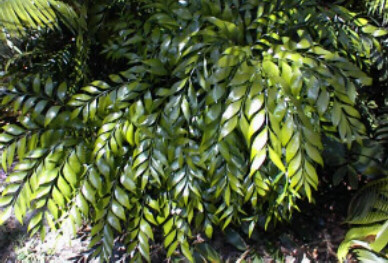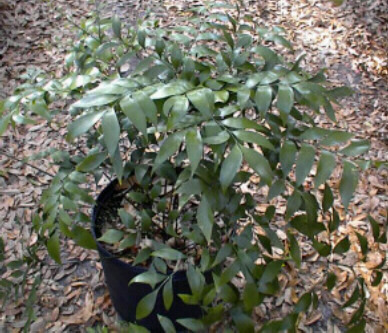 |
|
Bowenia serrulata is a plant that grows in a sandy area
in Australia. They have been known to push roots, 6 feet deep
in this sand. I think this fact is the key to growing this species.
Many people have problems growing serrulata in the ground because
their soil is not exactly right. These plants prefer shade and
root room, if grown in pots. I have seen this plant with leaves
that were 7 feet tall. B. serrulata can be identified by it's
thinner leaflets with serrated edges. |
 |
|
Bowenia spectabilis is one of my favorite cycads. It
has smooth, more rounded leaflets. This species comes from rainforest
type areas, in the northern part of Queensland where the soil
is more organic. They don't grow the same kind of root system
that B. serrulata does. They seem to prefer to grow in a wider
pot, instead of deep pot. I have seen this plant grow to 5 feet
tall, and 5 feet wide. |
 |
|
Bowenia "Tineroo" is not a described species,
but may be some day. It has slightly rounded leaflets with serrated
edges, but can be variable. The habitat is far away from the
habitat of B. serrulata. It grows in sand near Lake Tineroo in
Queensland Australia. This is a fairly hard to find plant because
the plant grows in a national park, and only a few people have
breeding plants. It appears to be somewhat like a dwarf serrulata,
but can grow to be 5 feet tall. |